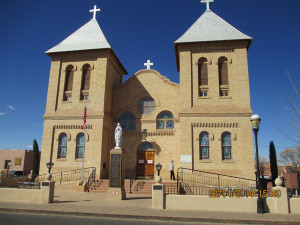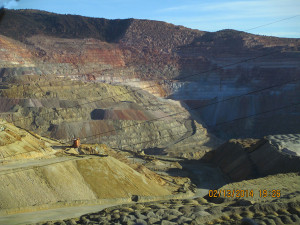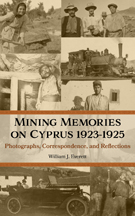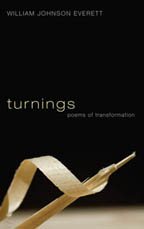We are spending the month of February in the little town of Mesilla, adjacent to Las Cruces, New Mexico. Mesilla (pronounced “Meh-SEE-yah”), which means “little table,” was formed shortly after the end of the Mexican-American War of 1846-48 to provide a place on the Mexican side of the Rio Grande for Mexicans displaced by the war. However, when the US bought the land that came to be called the Gadsden Purchase from Mexico in 1854, Mesillans found themselves citizens of the US once again. Since then, the Rio Grande moved itself west of the town, seemingly ratifying what politics and money had effected earlier.
Over all this time there has been
a Catholic church at the center of Mesilla’s life – the church of San Albino, named after the fifth century French Christian martyr, St. Aubin. The present church structure, like its two predecessors, stands at the north end of the plaza. Its three bells have tolled to mark the sacred and secular time of the town since the 1880s.
While at first I was told they had a silver core, I found out that at least one and possibly all of them, were cast in Milwaukee around 1887, so I think they are solid bronze. Its (or their) origin in Milwaukee, where I taught for 15 years, was a happy surprise, yet another evidence of connection in our lives. I wanted to think
that the copper in them came from the famed St. Rita mines northwest of here in the Gila Mountains, but their origin says otherwise. The Gila Mountains were once the stronghold of Apaches, whose many raids to defend their land and life terrorized both miners and ranchers of this region. The St. Rita mines, which we visited last week, continue to be one of the largest and most productive copper mines in North America.
The bells, augmented by an electronic carillon, punctuate our day, with a special sequence on the old bells on Saturday evening and Sunday morning to call people to Mass. I have been told that the largest bell, named San Albino (also called the Campana Grande), rings only on Easter, since its resonance matches that of its tower just enough to have introduced some cracks in the tower itself.
As if to mirror the church’s durable presence, a single family, I have been told, has been ringing the bells since the 1890s. According to a plaque outside the church, Manuel Valles rang the bells for sixty years. This task has been handed down, so that a third generation in the family now puts their hands upon the ropes to bring their voices to the world. I hear that yet another generation is standing in line to take up the task. Perhaps I shall find out more before we leave.
Living in the presence of these bells and visiting the vast open-pit mine of St. Rita call to mind my research into the life and work of my grandfather, Charles Jackson, in the copper mines of the Americas and of Cyprus, which we visited two years ago. Copper is so ubiquitous in our lives that we scarcely think about the ways it has shaped us over the centuries, just as the bells of San Albino do today in Mesilla. I am listening to the bells this Sunday morning and exploring, like the veins in an old shaft mine, the connections of copper in my own life. You can do the same.
I share a poem emerging from the history of these bells and my ruminations.
Manuel Valles rang the bells for sixty years
in the tower of the church of San Albino
in the town of La Mesilla.
Lovingly he called to them,
San Albino,
raise your voice like the martyr Saint Aubin,
Maria Albina,
annunciate the hour to the world,
Sagrado Corazon,
call the people to the heart of Jesus.
For sixty years Manuel Valles rang the bells.
The sun-baked bricks received their tones
settling in the wind-blown sand.
The tin roofs echoed dryly in the torpid heat.
The doves flew out surprised each time
his great bronzed hands pulled on the ropes.
When Manuel Valles rang the bells those sixty years
lovers kissed the hours in the Calle Guadalupe,
children skipping rope changed their rhythm to his chimes,
the women in bright dresses,
the men in long black pants and floppy hats
responded to his call and filled the welcoming church.
The bells that Manuel Valles rang for sixty years
sang when people wed
and cried out when they died
in war, at work, in bed.
Now he has joined the invisible chorus of the bells.
Manuel Valles rang the bells for sixty years.
His hands now handed down
receive a little boy
who reaches up
to pull the dancing cord.









 Red Clay, Blood River
Red Clay, Blood River
Thanks, Bill, for another bit of history, written in your usual lyrical style. When I lived in New Mexico, I was always affected and awed by the mystery and history of the vast arid mountains and deserts, the stoic and wise inhabitants who have survived so much. I am so glad you are there to give us more insights into the beauty of this ancient area. I can almost hear the bells.
Interesting article. When I was with L’eggs (the pantyhose company), we had a hosiery plant in Las Cruces, and I got to visit about once a year. Flew into El Paso and drove up, past beautiful mountains and desert landscape. I always looked forward to that trip and enjoyed the visit — great people, beautiful scenery, the best Mexican food I’ve ever had, and a taste of Hispanic culture all in one, plus watching skilled hands make great pantyhose. I never stayed long enough to learn much of the history (shame on me), so your blog has helped fill that gap. Thanks, Bill.